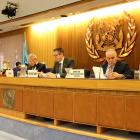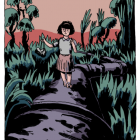Containing Contamination
Containing Contamination
Chapter 2 of the virtual exhibition Toxic Relationships: Uncovering the Worlds of Hazardous Waste.
Toxic Relationships: Uncovering the Worlds of Hazardous Waste
Modern societies’ hazardous by-products cast a dark shadow over the planet. A threat to humans and the environment alike, hazardous waste comes in many guises: discarded batteries, asbestos, giant ships, or tailings from mining operations. While these objects might not seem dangerous at first sight, they have characteristics and components that make them potentially deadly. This virtual exhibition gives you an insight into the obscure world of hazardous waste, its questionable trade across the globe, and the people successfully fighting for safe and just waste management. The Hazardous Travels research team takes you on a journey both into our research and to the edges of our societies that many prefer not to see.
Maximilian Feichtner, Jonas Stuck, Ayushi Dhawan, Christina Lennartz, and Simone M. MüllerAbout the author

Rachel Carson Center for Environment and Society, LMU Munich, Germany
Show more
Rachel Carson Center for Environment and Society, LMU Munich, Germany
Show more
Rachel Carson Center for Environment and Society, LMU Munich, Germany
Show more
Rachel Carson Center for Environment and Society, LMU Munich, Germany
Show more
Rachel Carson Center for Environment and Society, LMU Munich, Germany
Show moreDr. Simone M. Müller is Project Director and Principal Investigator of the DFG Emmy Noether Research Group “Hazardous Travels: Ghost Acres and the Global Waste Economy” at the Rachel Carson Center for Environment and Society, Munich. She works at the intersection of globalization studies, economic and social history, and environmental humanities. Her research interests range from the international trade in hazardous waste material and the intellectual history of economic ecological thinking, to green city concepts and the study of ocean space. She has received numerous awards and fellowships, among them from the Smithsonian Institution, the Science History Institute, and the University of Pennsylvania. She is a member of the Young ZiF (Center for Interdisciplinary Research) of the University of Bielefeld and in 2017 was nominated as one of the leading female academics in her field by the German Research Foundation (DFG) and the Bosch Foundation. You can learn more about her research here.










